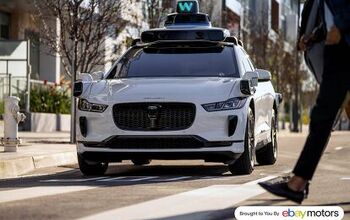With the UX, Lexus Now Has a Finger In Every Utility Vehicle Pie

The only thing missing is a cabriolet. With the unveiling of its new UX subcompact (“urban compact crossover” in Lexus parlance), Toyota’s premium division now spans the utility segment gamut, with models ranging from ultra-small unibodies to full-size, body-on-frame luxo-barges.
Lexus’ European arm pulled the wraps off the UX on Tuesday, ahead of the global model’s world premiere in Geneva next week. In the model’s sights are a trio of pint-sized Germans and a singular Japanese foe, all competing for a slice of a segment with unclear growth prospects.
Bearing edgy sheetmetal not dissimilar to the compact NX and midsize RX crossovers, the UX adopts Lexus’ trademark spindle grille and grafts a pair of itty bitty tail fins onto its rear flanks. It’s expected to ride atop Toyota’s TNGA modular platform — the same one underpinning the Toyota C-HR. Thanks to this architecture, Lexus saw fit to boast about the UX’s “exceptional body rigidity” and “low centre of gravity,” which promises agile, car-like handling.
As small, car-based crossovers are absolutely nothing new, it’s hard to imagine there’s still people concerned about body-on-frame/live axle driving dynamics, but maybe urban, European customers really do lie awake at night worrying about this.
While we’ll see the UX on this side of the Atlantic, there’s a question mark hovering over the model’s powertrain. The European setup is expected to be a new 2.0-liter four-cylinder and electric motor combination, delivering greater gusto and economy than an existing small Toyota four-banger. Certainly, the lone naturally aspirated 2.0-liter in the C-HR doesn’t scream “premium.” For a vehicle of this price point (whatever it may be), buyers demand a reasonable measure of power and prestige.
We’ll learn more about this model on March 6th. In the meantime, there’s good reason to wonder whether Lexus’ entry into this segment will grow the market or just steal sales away from Mercedes-Benz, Audi, BMW, and Infiniti.
Sales of the Mercedes-Benz GLA in the U.S. peaked in 2015, its first full year on the market. Volume slid slightly the following year, and 2017 saw a further 1.8 percent drop. The Audi Q3, on sale since 2014, rose to a new U.S. sales high last year, but only topped 2016 by 2.9 percent. Infiniti’s QX30, which debuted in 2016, raked in 14,093 sales in its first full year on the market. That tally is significantly below its competition.
The BMW X1 remains top dog in the premium subcompact utility market, with sales rising 10.8 percent in 2017 to 30,826 units. These volumes, while far below those of compact or midsize crossovers, aren’t insignificant. In a mildly contracting new car market, having a higher-margin new vehicle to dangle in front of utility buyers is never a bad thing.
[Image: Lexus Europe]

More by Steph Willems
Latest Car Reviews
Read moreLatest Product Reviews
Read moreRecent Comments
- Namesakeone If I were the parent of a teenage daughter, I would want her in an H1 Hummer. It would be big enough to protect her in a crash, too big for her to afford the fuel (and thus keep her home), big enough to intimidate her in a parallel-parking situation (and thus keep her home), and the transmission tunnel would prevent backseat sex.If I were the parent of a teenage son, I would want him to have, for his first wheeled transportation...a ride-on lawnmower. For obvious reasons.
- ToolGuy If I were a teen under the tutelage of one of the B&B, I think it would make perfect sense to jump straight into one of those "forever cars"... see then I could drive it forever and not have to worry about ever replacing it. This plan seems flawless, doesn't it?
- Rover Sig A short cab pickup truck, F150 or C/K-1500 or Ram, preferably a 6 cyl. These have no room for more than one or two passengers (USAA stats show biggest factor in teenage accidents is a vehicle full of kids) and no back seat (common sense tells you what back seats are used for). In a full-size pickup truck, the inevitable teenage accident is more survivable. Second choice would be an old full-size car, but these have all but disappeared from the used car lots. The "cute small car" is a death trap.
- W Conrad Sure every technology has some environmental impact, but those stuck in fossil fuel land are just not seeing the future of EV's makes sense. Rather than making EV's even better, these automakers are sticking with what they know. It will mean their end.
- Add Lightness A simple to fix, strong, 3 pedal car that has been tenderized on every corner.


































Comments
Join the conversation
In this class I think the Audi Q3 looks best. But then again I am somewhat biased towards Audi.
Did you really say "A finger in every pie"?